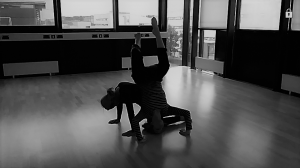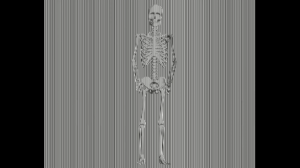This week’s class was a little different from all the other weeks as we were preparing for our assessment next week. The whole session was running through Nancy Stark-Smiths the Underscore. I felt prepared for the session as I watched her video talking about the underscore beforehand. The score made me think about my own practice and I questioned if I have full challenged and emerged myself in the concept of Contact Improvisation this semester? In a sense I believe that I have because I have worked with new people and created relationships with people I did not think I could, because I do not have a connection with them outside of the dance studio. However, I feel that I could have explored more with the idea and movements of CI, no matter if something did not work out. This way I would know that I tried something new instead of giving up at the first hurdle.
Within the session I feel that I had some strong moments with different people. One of these would be when I was improvising with Sammy. We completed a series of lifts without any sticky moments, it felt good that one thing just flowed into another and even when we failed we tried again. I found that when something worked well it was because we didn’t loose momentum in-between movements. Finally, we had trust in each other meaning that whatever happened we knew we would not get hurt.
I found that when we used the score ‘repulsion’ people started to create larger groups to improvise within. Although I am not sure why this is it was interesting to see this happen, there is more to watch and work with when there is a bigger group of people. I noticed myself edging towards joining a group when I was working in a pair. I would try and move my improvisation to where a group was in the room and find a natural way into the group.
A connection that did not work this week was with Hannah, I think this is because we did not create a connection before we started moving and just went straight into the lifts and tricks. We usually work well together and can create some interesting moments, but this week just proved difficult.
The final jam this week seemed more relaxed than usual. You could see moments where relationships did not work so well, but instead of running away from these sticky parts people negotiated ways to be open with each other to create a way they could improvise together. It was nice to see things that did not work being turned into new exploratory ‘tools’ to use. A nice connection was between Abbie and Kye, they were so open to improvising with each other. They also have a ‘no fear’ motto when it comes to Contact Improvisation, meaning when they both work together this is just magnified.
Bibliography
Stover, J. (1989). Some considerations when structuring an Improvisation (to be seen by an audience). Contact Quarterly/ Contact Improvisation Sourcebook II, Vol.14. pp185

